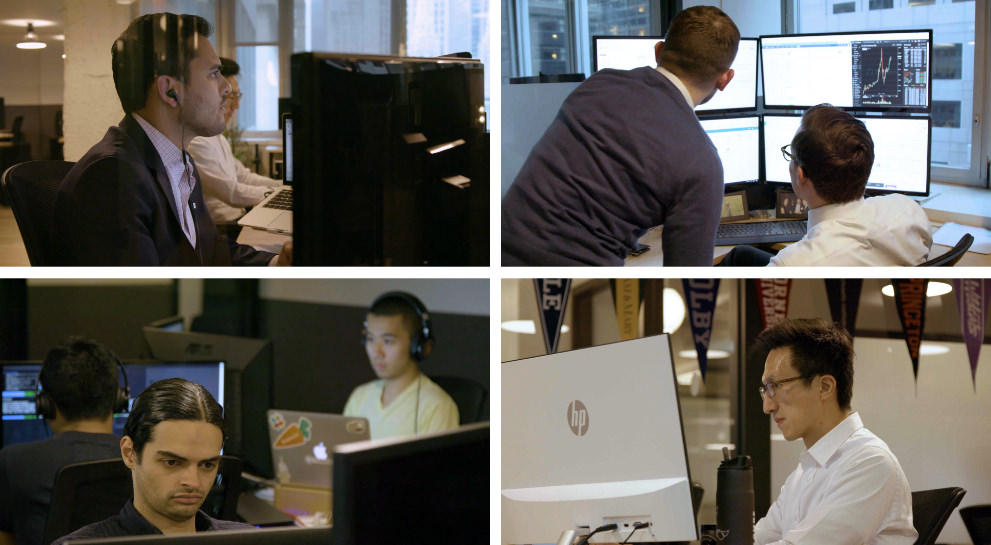Blockchain gets real
Thomson Reuters + Axoni
Blockchain, or distributed ledger technology, is a transaction processing and settlement system where information about a transaction or an asset can be cryptographically digitized, stored and securely shared through a peer-to-peer network, allowing participants to transact without intermediaries while maintaining a secure encrypted audit trail.
While much attention has been focused on blockchain’s potential to disrupt and disintermediate some commercial activities, Thomson Reuters has been actively collaborating for some time with both customers and innovators to explore powerful proofs-of-concept and benefits, including:
- Reduced cost (by removing intermediaries)
- Increased efficiency (by removing the need to reconcile disparate records)
- Simplification (by reducing the complexity of multiple ledgers and databases)
- Synchronization (through continuous updating of information across all parties)
- Greater accuracy (by reducing the errors that come from disparate parties reconciling)
- Greater security (verified information – e.g., identity, transaction, contract)
- Better accessibility (all parties permissioned to the same set of records)
How it works


As innovators – and indeed entire industries – begin to explore how this emerging technology might work in their own markets and use cases, an exciting partnership in 2016 enabled Thomson Reuters to be among the first to successfully use blockchain for financial transactions.

In partnership with Axoni, a distributed ledger specialist firm serving the world’s largest financial institutions and capital markets service providers, we showed how blockchain technology and smart contracts can manage affirmations and post-trade, life-cycle processing for over-the-counter (OTC) equity swaps.
Together we demonstrated the speed and cost advantages of using a permissioned, distributed, peer-to-peer blockchain network to handle the complex post-trade events inherent to equity swaps – including mark-to-market calculations, margin payments and corporate-action processing.
Testing blockchain’s potential
The initiative, including Barclays, Citi, Credit Suisse, J.P. Morgan, IHS Markit and Capco, a global financial services management consulting firm that is part of FIS, tested:
- Automated life-cycle management
- Synchronization of single-stock, index and portfolio swaps
- Critical aspects of deploying and managing the distributed ledger network
Collaboration among our clients and partners demonstrates the best in co-innovation, where each of us plays a critical part in advancing the possibilities for this emerging technology. This has exciting potential for workflows in the capital markets.

Smart contracts and “golden” records
In the tests, blockchain tech generated smart contracts from simulated legal confirmations sourced from MarkitSERV or trades submitted by dealers on the distributed network. This created a synchronized, “golden” record of each transaction.
Economic terms, as well as computational logic to manage event processing and payment calculations based on market events, were embedded in those smart contracts. Thomson Reuters integrated Thomson Reuters BlockOne™ ID for Ethereum™ with specialized software from Axoni to provide valuations, as well as trusted market data including equity prices, LIBOR rates and corporate actions, directly on the blockchain. This enabled the smart contracts’ automated workflows.
Complex contracts, a distributed market structure and replicated workflows across many parties make blockchain technology a natural fit for equity derivatives. Demonstrating this can be achieved on the same technology also used to optimize post-trade asset servicing for credit derivatives further proves the multiplicative value of deploying this infrastructure. It was a pleasure to work with influential and forward-thinking parties required to make this project impactful.

As more companies experiment with emerging blockchain technology to identify the strongest use cases, Thomson Reuters customers rely on the trusted information and insights we bring to the table to enable their workflows and decisions.
For example, we partner with businesses to:
- Understand how blockchain might transform digital identity, digitized assets and the future paradigm of data exchange
- Help customers consider the future ramifications of traditional legal contracts vs. “smart contracts”
- Supply financial content to smart contracts to improve the full life cycle of trade and settlement for a particular asset class

An ecosystem of blockchain partnership
We have developed an ecosystem with hundreds of entrepreneurs and start-ups as well as with key industry organizations. We build blockchain applications and experiment with them. We have invested, alongside the best venture and strategic investors, in start-ups that demonstrate transformational ideas with solid business models. This sets us apart and opens the door to more opportunities and partnerships.

For example, Thomson Reuters invested in Fluent (now Hijro), a financial technology start-up offering a cloud-based financial transaction network. The firm is disrupting and automating B2B payments, asset verification, financial wires, supply chain, contracts and settlements through distributed ledger technology and protocols. In partnership, we are developing potential blockchain applications for Thomson Reuters customers. Thomson Reuters also invested in Funderbeam, a blockchain-based trading platform providing primary and secondary market liquidity to private growth companies.
We also belong to the Hyperledger Project, a collaboration among technology companies, banks, start-ups and the Linux Foundation to create open standards for distributed ledger technology. And we have partnered with financial innovation consortium R3 to design and apply blockchain-inspired technologies for global financial markets.
